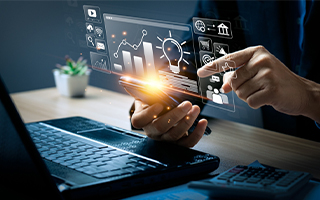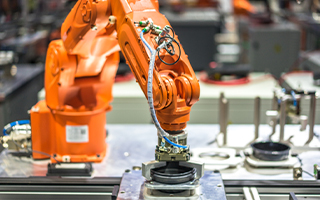Homes are getting smarter. Are the IT service providers too?

A vision from not so distant future…..
- It’s 7 AM and the alarm goes off. The lights turn on and your favorite playlist plays in the background. The alarm goes off when you step onto the special doormat, assuring it that you are up and moving. Simultaneously, the water in the shower is triggered to the right temperature and the water for tea/coffee begins to boil. The morning is perfect and the technology seamlessly integrates with your routine.
- The house is controlled by your voice command and locks itself as soon as you leave. It puts on its security alarms and switches off any non-essential appliances to avoid disasters.
- You have had a long day and are now approaching home. The temperature is set with the click of a button on your personal device and your favorite evening music is on as soon as you open the door. You enter your heavenly home with a content smile and think ‘This is life!’.
The Internet of Things (IoT) is the next definitive step in the evolution of wireless networks, Big data, and connected devices. As sensors shrink in size and migrate from our smartphones to other everyday objects, one of the greatest opportunities lies ahead in the form of the “smart home.” They offer immense possibilities for energy and cost savings, greater home efficiency through automation, as well as improved home security. Smart homes have the potential to provide for consumers’ growing expectations of convenience, sustainable living, safety, and security. Since the conception of idea for smart homes thanks to ‘The Jetsons’ and the likes, the developers have pursued the vision and created or ‘smartified’ appliances to make life ‘simpler’ for us. Although the above scenarios may appear fanciful, the connected home will offer these opportunities in the not too distant future. And given the range of use cases, the potential can be only partially imagined today. All these appliances and gadgets produce infinite data and contextualizing it in the light of enabling smart decisions becomes key.
While all this sounds intrinsically achievable, the high-profile security risks concern the consumers and deter them in adopting these technologies to realize their potential.
All the smart devices and gadgets collect sizable amount of data from the sensors installed in them. This data can be information about the size of the house, entry gates, detailed layout, vacancy of the house during times of day or details of plans and vacations or conversations between the house occupants. An example of this is Amazon’s Alexa or Iphone’s Siri. The biggest consumer constraints to early adoption of these gadgets include hacking, technology failure and incorrectly set systems.
From the manufacturers’ point of view, apart from safety and security of the consumers’ data, to provide them trustworthy devices that reliably deliver the promised benefits, interoperability and managing the ever-growing size of data are major concerns. In a smart home, interaction between various devices is expected to make the whole system smart. As multiple vendors and service providers are involved in developing the various devices, they need a common platform where they all interact with one another. Only with this very important component of interoperability, does the house really becomes ‘smart’. One needs to analyze the multiple layers of data to provide intelligent solutions to the consumers. IoT service providers should be able help the vendor overcome these challenges and make the device ‘talk’ to each other. For instance, the dryer could interact with the electricity provider and using historic data or trends can figure out a time when the electricity is minimal in the day. This non-essential activity can be programmed to operate at such a time thus increasing cost saving for the user and reducing environmental footprint for the society.
The third biggest wave of digitization has just begun– the IoT phenomenon. The bigger question remains – will IT service providers be able to catch up with this change and help the world in the IoT transformation?

















